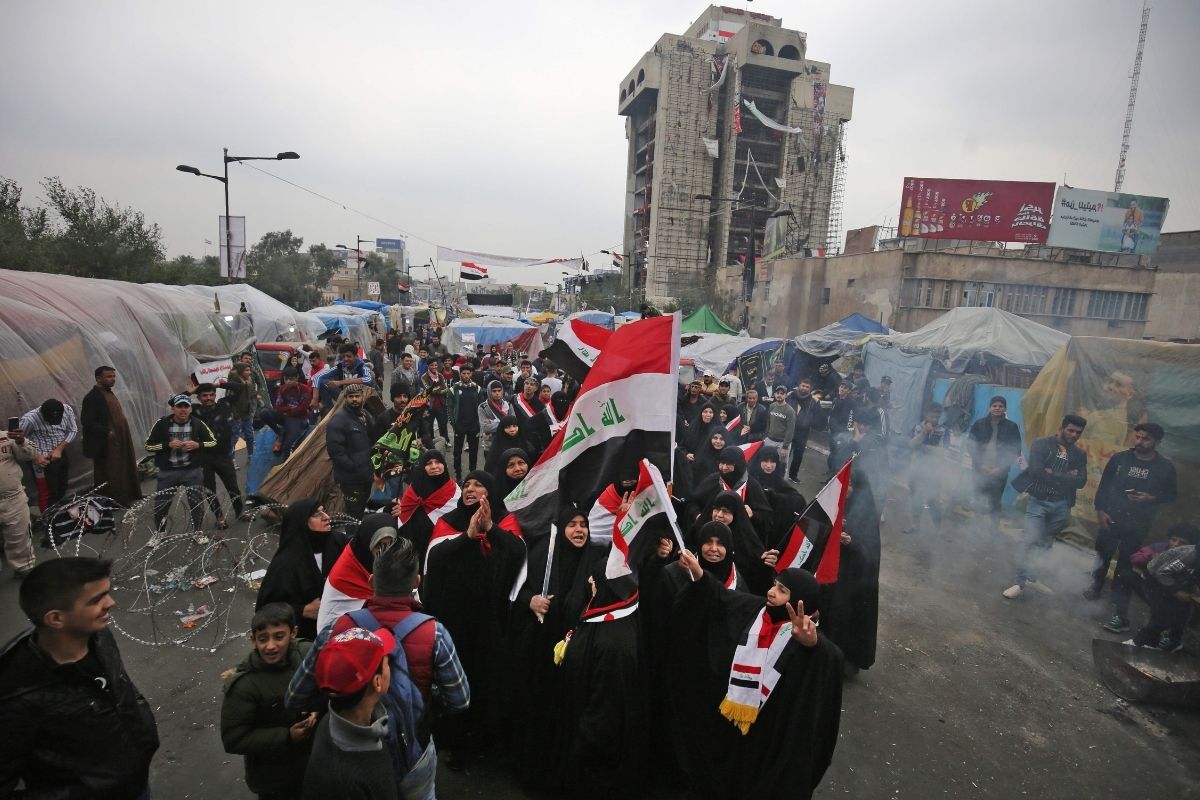
The Shia Uprising in Iraq is a significant chapter in the country's history, marked by intense conflict and profound impact. What triggered this uprising? It was a combination of political repression, economic hardship, and religious persecution under Saddam Hussein's regime. The Shia population, long marginalized, saw an opportunity to rise against the oppressive government following the Gulf War in 1991. This rebellion was not just a fight for power but a desperate cry for justice and equality. Understanding the Shia Uprising provides insight into Iraq's complex socio-political landscape and the enduring struggle of its people for freedom and dignity.
Key Takeaways:
- The Shia Uprising in Iraq, also known as the 1991 Intifada, was a major rebellion led by Shia Muslims against Saddam Hussein's regime, with significant international and long-term consequences.
- The uprising highlighted deep sectarian divisions, led to the fall of Saddam Hussein, and continues to shape Shia identity and politics in Iraq, with annual commemorations and cultural impact.
The Shia Uprising in Iraq: An Overview
The Shia Uprising in Iraq, also known as the 1991 Intifada, was a significant event in the country's history. It followed the Gulf War and saw widespread rebellion against Saddam Hussein's regime. Here are some key facts about this pivotal moment.
- The uprising began in March 1991, shortly after the end of the Gulf War.
- Shia Muslims, who make up the majority of Iraq's population, led the revolt.
- The rebellion started in Basra, a city in southern Iraq.
- It quickly spread to other cities, including Najaf and Karbala.
- The uprising was partly fueled by the belief that the U.S. would support the rebels.
Key Figures and Groups Involved
Several important figures and groups played crucial roles in the Shia Uprising. Understanding their involvement helps paint a clearer picture of the events.
- Grand Ayatollah Ali al-Sistani, a prominent Shia cleric, was a significant spiritual leader during the uprising.
- The Supreme Council for the Islamic Revolution in Iraq (SCIRI) was one of the main groups involved.
- Muqtada al-Sadr, another influential cleric, also played a role in the rebellion.
- The Badr Brigade, the armed wing of SCIRI, participated actively in the fighting.
- Many ordinary Iraqi citizens joined the uprising, hoping for a change in leadership.
The Role of the International Community
The international community's response to the Shia Uprising was complex and had lasting impacts on the region.
- The U.S. initially encouraged the uprising but did not provide direct military support.
- The United Nations imposed sanctions on Iraq, which affected the country's economy.
- Iran, a neighboring Shia-majority country, provided some support to the rebels.
- The international community largely condemned Saddam Hussein's brutal crackdown on the uprising.
- Despite the lack of direct intervention, the uprising drew global attention to Iraq's internal struggles.
The Brutal Suppression
Saddam Hussein's regime responded to the uprising with extreme violence, leading to significant loss of life and suffering.
- The Iraqi military used tanks and helicopters to suppress the rebellion.
- Thousands of Shia civilians were killed during the crackdown.
- Mass graves were later discovered, revealing the extent of the atrocities.
- Many Shia leaders were arrested, tortured, or executed.
- The suppression of the uprising left deep scars on the Shia community in Iraq.
Long-Term Consequences
The Shia Uprising had lasting effects on Iraq's political and social landscape, influencing future events in the country.
- The uprising highlighted the deep sectarian divisions within Iraq.
- It contributed to the eventual fall of Saddam Hussein's regime in 2003.
- The events of 1991 led to increased Shia political activism in Iraq.
- Many of the leaders from the uprising later played significant roles in post-Saddam Iraq.
- The memory of the uprising continues to shape Shia identity and politics in Iraq.
Cultural and Historical Impact
The Shia Uprising is remembered and commemorated in various ways, reflecting its importance in Iraqi history.
- Annual commemorations are held in Shia-majority areas to honor the victims.
- The uprising is a significant topic in Iraqi literature and media.
- Monuments and memorials have been erected in cities like Najaf and Karbala.
- The events of 1991 are taught in Iraqi schools as part of the country's modern history.
- The uprising remains a symbol of resistance and resilience for many Iraqis.
Reflecting on the Shia Uprising in Iraq
The Shia Uprising in Iraq remains a pivotal moment in the country's history. This event highlighted the deep-seated sectarian tensions and the struggle for political power. The uprising showcased the resilience of the Shia community and their quest for justice and equality. It also exposed the brutal tactics used by the regime to maintain control. Understanding these facts helps us grasp the complexities of Iraq's socio-political landscape. The uprising's legacy continues to influence Iraq's current affairs, reminding us of the ongoing challenges in achieving lasting peace and stability. As we reflect on these events, it's crucial to remember the sacrifices made and the lessons learned. This historical episode serves as a stark reminder of the importance of unity, human rights, and the relentless pursuit of freedom.
Frequently Asked Questions
Was this page helpful?
Our commitment to delivering trustworthy and engaging content is at the heart of what we do. Each fact on our site is contributed by real users like you, bringing a wealth of diverse insights and information. To ensure the highest standards of accuracy and reliability, our dedicated editors meticulously review each submission. This process guarantees that the facts we share are not only fascinating but also credible. Trust in our commitment to quality and authenticity as you explore and learn with us.
